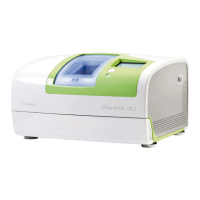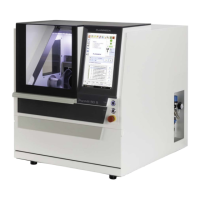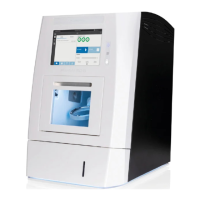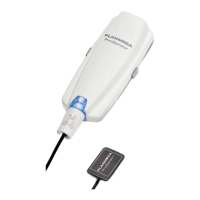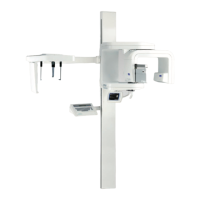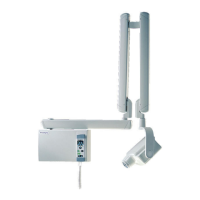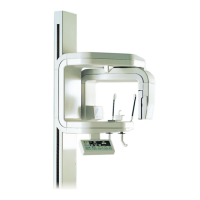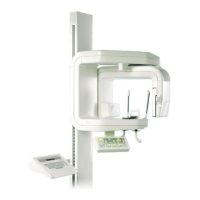Do you have a question about the Planmeca PlanScan and is the answer not in the manual?
Lists related documentation and publication numbers for the system.
Describes the intended application of the Planmeca PlanScan System in dental restorations.
Specifies conditions where the impression system is not indicated for use.
Instructions for turning on the laptop and launching the Romexis software.
Details on connecting and disconnecting the scanner's Thunderbolt adapter.
Information on scanner indication lights and the use of its standalone cradle.
Guide to using the mouse for rotating and resizing 3D models.
Overview of system options, default settings, and taking screenshots.
Lists various system settings for restoration design and milling processes.
Instructions for moving the laptop and scanner without shutting down software.
Guidelines for system software and hardware upgrades via Planmeca.
Procedures for connecting and disconnecting the Planmeca PlanScan scanner tip.
Instructions for cleaning, identifying, and storing autoclaveable/disinfection tips.
Guidelines for cleaning the entire Planmeca PlanScan System.
Contact information for customer support and additional resources.
Critical warnings regarding electrical shock, unauthorized modifications, and laser safety.
Steps for creating, searching, sorting, and opening patient records.
Procedures for managing cases, including deletion, starting new restorations, and setup.
Layout of the Scan tab, including key functional areas.
Details on scanner tips, indicators, session usage, and color/autoclave status.
Guidelines for positioning the scanner and an overview of the scanning process.
Explanation of the Live View display and audio feedback during scanning.
Adjusting scan view, field of view, and evaluating models for missing data.
Using the Eraser, Reset, and Delete tools to modify scanned models.
Methods for scanning occlusion data, including bite registration preparation.
Process for selecting and confirming bite registration data for occlusion analysis.
Steps for scanning opposing teeth and buccal views for alignment.
Performing buccal bite scans and understanding automatic model alignment.
Manual alignment of models and rotating models for better visualization.
Guidance on scanning pre-operative teeth or wax-ups for template creation.
Techniques for scanning dental impressions and positioning the scanner.
Detailed steps for scanning an impression and inverting it for design.
Initial orientation of the model when accessing the Margin tab.
Overview of tools for creating and editing margins: Paint, Trace, Lasso.
Using margin aids like 'Show Features' and the 'Paint' tool for supragingival margins.
Using the Trace tool for equigingival and subgingival margins.
Utilizing the Lasso tool for partial restorations and sharp margins.
Configuring ICE Margin Mode and modifying existing margins.
Using Move Margin and Add Segments tools to refine margin paths.
Applying the Retract tool to create virtual ditching for STL export.
Assigning tooth numbers and drawing margins for multiple restorations.
Drawing margins for pontics in bridges to aid the design process.
Steps for exporting a case file to share with another Planmeca system.
Instructions for exporting 3D models in STL format.
Overview of exporting data via the DDX network to registered labs.
Detailed steps for creating a new case and submitting it through DDX Cloud.
Details on model number, part number, and electrical ratings.
Specifies storage and operating temperature, humidity, and altitude limits.
Provides dimensions and weight for the scanner, tip, and base.
Lists the specific cables provided with the scanner system.
Lists applicable standards for product safety, EMC, and laser safety.
Information on packaging standards and biocompatibility testing.
Lists various European, Canadian, US, and International standards.
Details North American and International approvals and quality system certifications.
Manufacturer's declaration on electromagnetic emissions compliance.
Manufacturer's declaration on electromagnetic immunity compliance for ESD and transients.
Specifies immunity test levels for surge, voltage variations, and magnetic fields.
Recommended separation distances for portable and mobile RF equipment.
Details on the scanner's laser class, output, wavelength, and beam divergence.
Definitions and meanings of various symbols used on system labels.
Information on Firewire warning and product identification labels.
Details on external components, internal fuse, and UL listing.
Provides contact details for customer support, including phone, email, and hours.
A table listing common symptoms, probable causes, and corrective actions.
Lists related documentation and publication numbers for the system.
Describes the intended application of the Planmeca PlanScan System in dental restorations.
Specifies conditions where the impression system is not indicated for use.
Instructions for turning on the laptop and launching the Romexis software.
Details on connecting and disconnecting the scanner's Thunderbolt adapter.
Information on scanner indication lights and the use of its standalone cradle.
Guide to using the mouse for rotating and resizing 3D models.
Overview of system options, default settings, and taking screenshots.
Lists various system settings for restoration design and milling processes.
Instructions for moving the laptop and scanner without shutting down software.
Guidelines for system software and hardware upgrades via Planmeca.
Procedures for connecting and disconnecting the Planmeca PlanScan scanner tip.
Instructions for cleaning, identifying, and storing autoclaveable/disinfection tips.
Guidelines for cleaning the entire Planmeca PlanScan System.
Contact information for customer support and additional resources.
Critical warnings regarding electrical shock, unauthorized modifications, and laser safety.
Steps for creating, searching, sorting, and opening patient records.
Procedures for managing cases, including deletion, starting new restorations, and setup.
Layout of the Scan tab, including key functional areas.
Details on scanner tips, indicators, session usage, and color/autoclave status.
Guidelines for positioning the scanner and an overview of the scanning process.
Explanation of the Live View display and audio feedback during scanning.
Adjusting scan view, field of view, and evaluating models for missing data.
Using the Eraser, Reset, and Delete tools to modify scanned models.
Methods for scanning occlusion data, including bite registration preparation.
Process for selecting and confirming bite registration data for occlusion analysis.
Steps for scanning opposing teeth and buccal views for alignment.
Performing buccal bite scans and understanding automatic model alignment.
Manual alignment of models and rotating models for better visualization.
Guidance on scanning pre-operative teeth or wax-ups for template creation.
Techniques for scanning dental impressions and positioning the scanner.
Detailed steps for scanning an impression and inverting it for design.
Initial orientation of the model when accessing the Margin tab.
Overview of tools for creating and editing margins: Paint, Trace, Lasso.
Using margin aids like 'Show Features' and the 'Paint' tool for supragingival margins.
Using the Trace tool for equigingival and subgingival margins.
Utilizing the Lasso tool for partial restorations and sharp margins.
Configuring ICE Margin Mode and modifying existing margins.
Using Move Margin and Add Segments tools to refine margin paths.
Applying the Retract tool to create virtual ditching for STL export.
Assigning tooth numbers and drawing margins for multiple restorations.
Drawing margins for pontics in bridges to aid the design process.
Steps for exporting a case file to share with another Planmeca system.
Instructions for exporting 3D models in STL format.
Overview of exporting data via the DDX network to registered labs.
Detailed steps for creating a new case and submitting it through DDX Cloud.
Details on model number, part number, and electrical ratings.
Specifies storage and operating temperature, humidity, and altitude limits.
Provides dimensions and weight for the scanner, tip, and base.
Lists the specific cables provided with the scanner system.
Lists applicable standards for product safety, EMC, and laser safety.
Information on packaging standards and biocompatibility testing.
Lists various European, Canadian, US, and International standards.
Details North American and International approvals and quality system certifications.
Manufacturer's declaration on electromagnetic emissions compliance.
Manufacturer's declaration on electromagnetic immunity compliance for ESD and transients.
Specifies immunity test levels for surge, voltage variations, and magnetic fields.
Recommended separation distances for portable and mobile RF equipment.
Details on the scanner's laser class, output, wavelength, and beam divergence.
Definitions and meanings of various symbols used on system labels.
Information on Firewire warning and product identification labels.
Details on external components, internal fuse, and UL listing.
Provides contact details for customer support, including phone, email, and hours.
A table listing common symptoms, probable causes, and corrective actions.
| Type | Intraoral Scanner |
|---|---|
| Scanning Principle | Confocal Microscopy |
| Light Source | LED |
| Software | Planmeca Romexis |
| Depth of Field | 20 mm |
| Connectivity Version | USB 3.0 |
| Connectivity | USB |
| Tip Size | Standard and small tips available |
| Accuracy | 20 μm |
